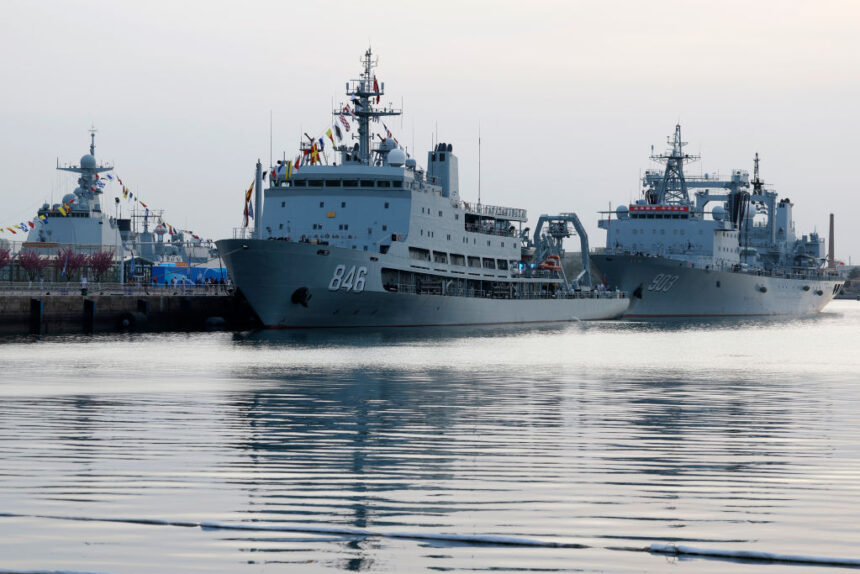
The United States has struggled to follow China’s lead in terms of maritime power, but the tide may soon turn.
China has announced the commissioning of a new frigate for the People’s Liberation Army Navy (PLAN), boasting through China’s state news agency that it will “play an important role in increasing the overall combat effectiveness” of the military. Xinhua News Agency on wednesday. News of additions to the Chinese Navy made headlines shortly after the U.S. Trade Representative (USTR) report The report found that the Chinese government is strengthening its shipbuilding, shipping and logistics sectors through unfair practices and policies, and called for “urgent action” to counter this.
China’s new frigate is currently the newest ship in the navy. outnumber us China commands the world’s largest navy. But perhaps more worrying is the pace at which China is producing these ships. China will expand its fleet from 355 warships in 2021. 400 ships in 2025. It is important to note that this sea power is linked to China’s commercial shipbuilding capabilities.
For nearly 30 years, China has been overworking its shipyards, creating massive excess capacity in the world market, forcing shipyards in the United States to close, losing tens of thousands of valuable jobs that support local communities, and destroying our economy. It’s been a burden. And China has not lost any momentum over the years. Its industry goals “have become more aggressive and sophisticated over the years,” USTR said. report state.
The Chinese government originally aimed to control 20% of the global market share for high-tech ships by 2011, but the current goal is to achieve 50% of the global market share by 2025. USTR. Similarly, China originally targeted a 10% global market share for maritime engineering equipment by 2011, but is now pursuing a 40% market share by 2025.
China’s shipbuilding dominance is a clear threat to American workers and America’s economic success, but it also threatens America’s national security. In strengthening its commercial shipyards, the Chinese government is significantly increasing its ability to produce more ships and high-tech vessels for its navy, an important tenet of China. Military-Civil Fusion (MCF) strategy.
Over the past several decades, America’s leadership in the global shipbuilding market was a decisive factor in World War II, with the capabilities of commercial shipyards supporting the military effort. “The United States had eight naval shipyards and at least 64 civilian shipyards actively building large naval or commercial ships.” Public Research Agency (CNA) Center for Naval Analysis wrote in the 2002 report. “Of the 64 civilian shipyards, 24 were major prewar shipyards, 20 were established or expanded by the Navy for the naval shipbuilding program, and 20 were established or expanded by the U.S. Maritime Commission for the merchant shipbuilding program. “”
The USTR investigation is an important step forward in thwarting Chinese market manipulation in the shipbuilding sector, and the US government is joining a growing number of those actions. In December, Sens. Mark Kelly (D-Ariz.) and Todd Young (R-Ind.), and Reps. John Garamendi (D-Calif.) and Trent Kelly (R-Mississippi), Ship lawIt creates a 25% investment tax credit for investments in shipyards and establishes a national goal of expanding the U.S.-flagged international fleet by 250 ships over 10 years.
of Labor Party caucus It also called on the Biden administration to protect American workers from Chinese market manipulation in critical sectors, and is committed to supporting a revitalization of the U.S. shipbuilding industry. calls for “bold action” to advance our national security and supply chain. ”
It is up to the Trump administration to respond to the growing threat that China’s shipbuilding dominance poses to our economy and security.






